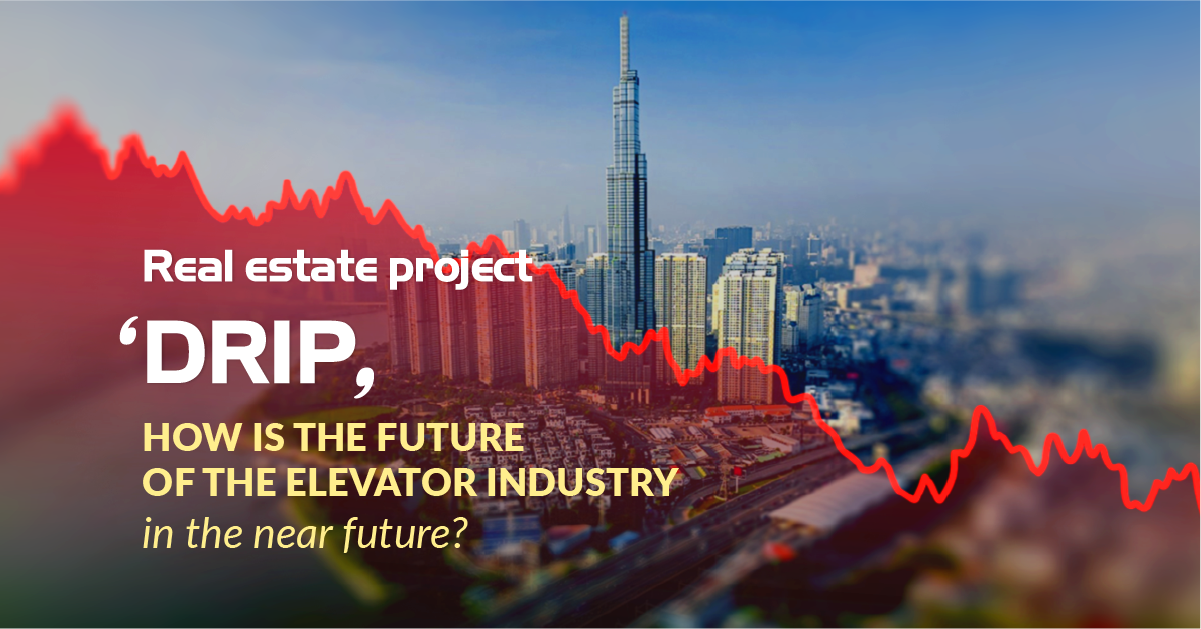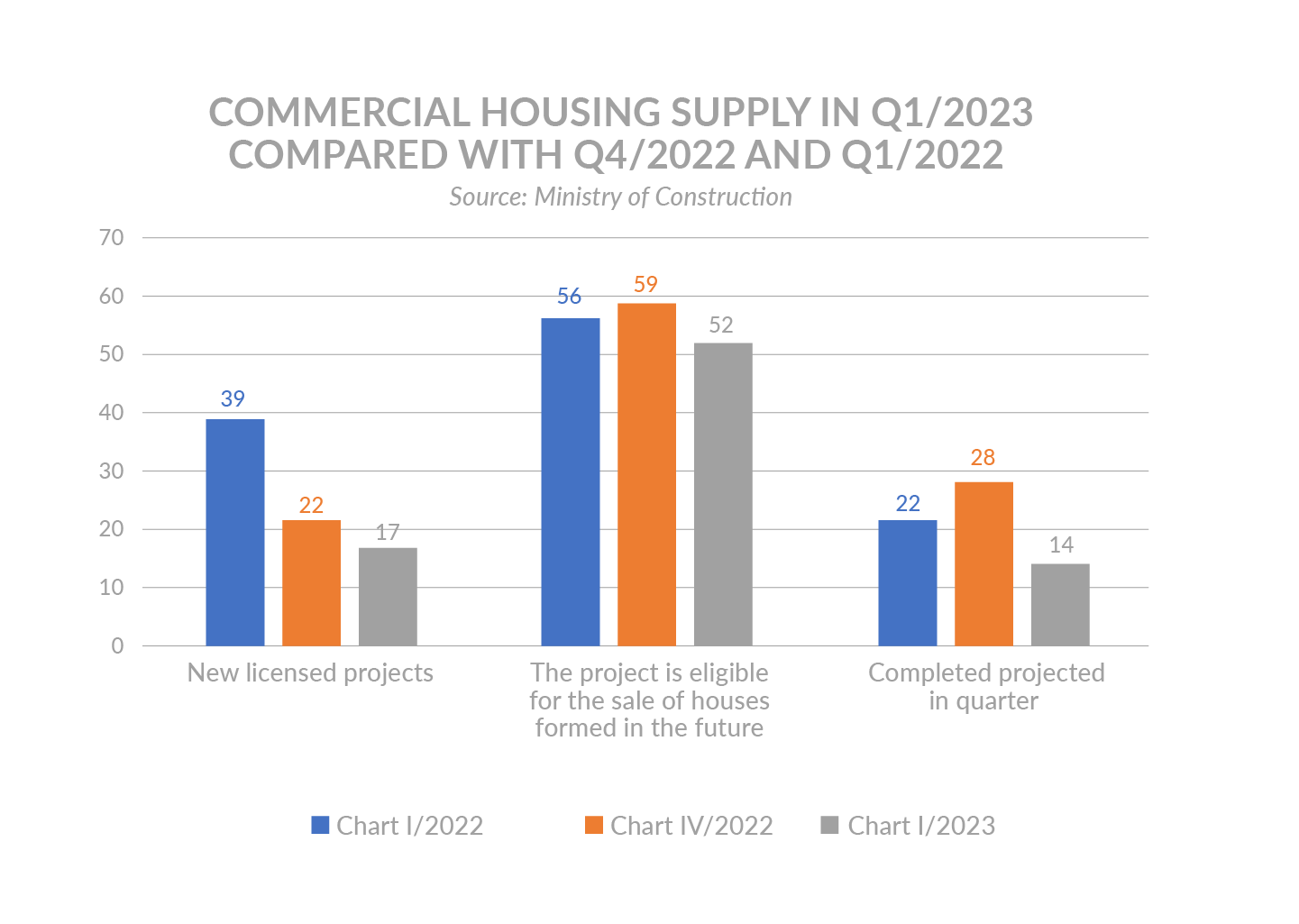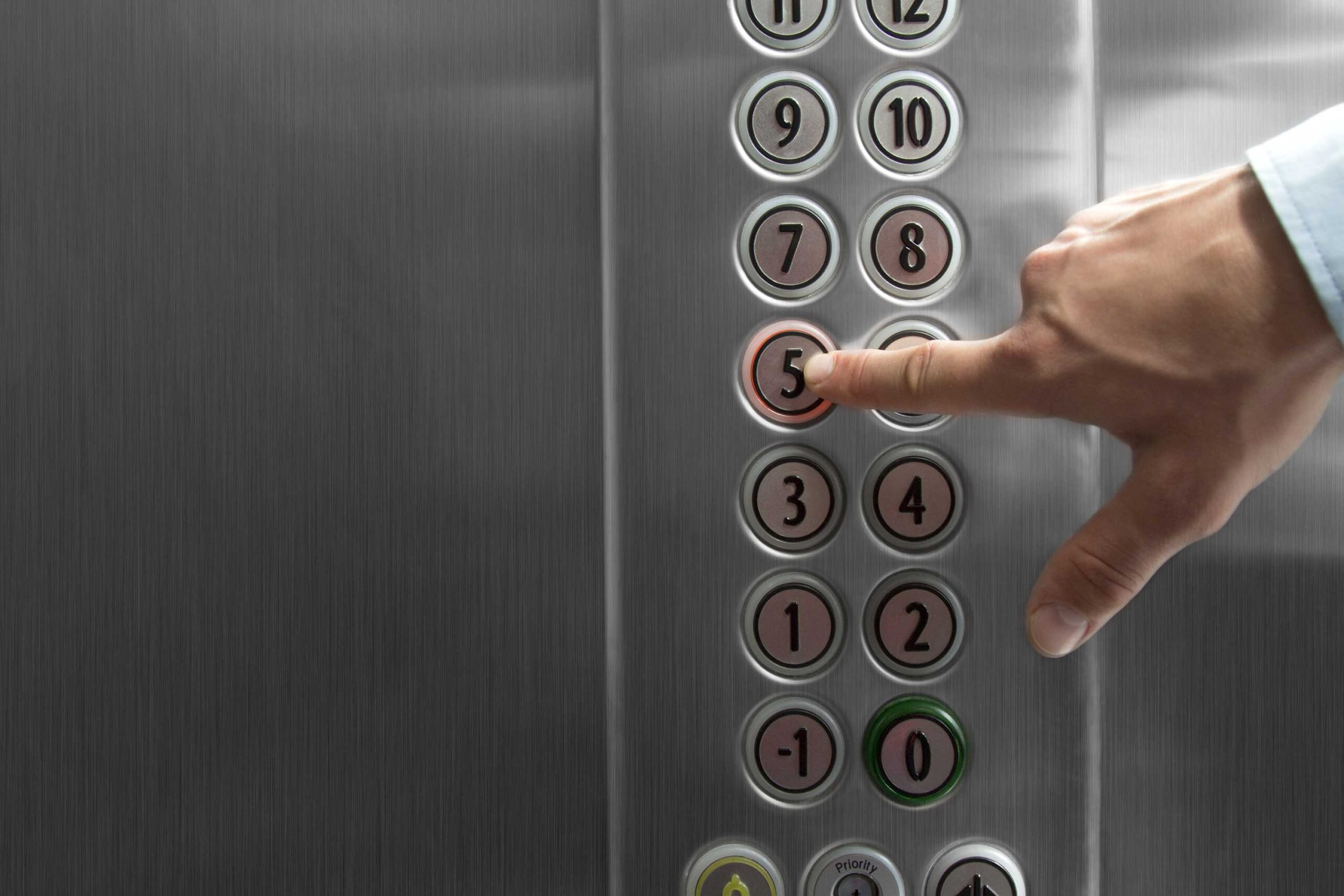
EM – As one of the industries indirectly affected by the “storm” of the real estate market, the elevator industry is said to have not really been “hit” at the current stage. So how will the future picture when the industry moves vertically to the “dramatic” crisis?

Many lift companies believe that this is the hardest period of this sector since debut, even more difficult than the crisis period in 2008-2014.
However, as per the flow of delayed spillover effect from real estate field, the “most miserable” time of elevator industry is actually the second quarter of 2024. So, what will the picture of the vertically moving sector at the “falling point” look like?
As reported by Ministry of Construction, recent statistics on the real estate market in the first quarter of 2023 shows that there are 14 commercial housing development projects in the first quarter of 2023. This amount equates roughly 50% compared to the fourth quarter of 2022 and is equal to 63% over the same period in 2022.
In details, there are 9 projects in the north, 3 projects in the central region and only 2 projects in the south.
The same happens with the volume of works under construction, with 435 projects in the North, 157 projects in the Central region, and 106 projects in the South.
The country in 2023 has 698 projects in total, the number of assignments increased by 149.79% compared to the fourth quarter of 2022 and only about 57.4% compared to the same period in 2022.
Notably, the newly licensed projects are in the worst situation while the whole nation has 17 projects, the volume of newly licensed projects is about 77.27% compared to the fourth quarter of 2022 and about 43.59 % compared to the first quarter of 2022.
The North has 9 projects, the South has only 3 projects, the Central 5 projects.

The above statistics indicate that these figures are alarming numbers when the number of development projects is far low in comparison with the same period in recent years, even lower than the peak period of the COVID-19 pandemic.
As one of the carriages of the train that real estate plays a role as the locomotive, it can be said that the elevator business in the near future will really enter the “hit” phase.
With the “dripped” quantity of newly granted projects, installation of new elevators has just finished in construction projects, afterward many elevator firms may drop into the position of “running out of things to do”. Total revenue is mainly extracted from maintenance’s turnovers and repair of old ladders’ earnings, especially for businesses specializing in providing ladders for high-rise buildings.
Not only companies specializing in providing elevators for high-sky towers, enterprises installing home elevators, especially the high-end segment, will also fall into a gloomier context when most customers tend to return to accumulating assets to get through needy times instead of spending money on expensive and luxury items.
It’s also from this point, the scarcity of new installation orders in most segments will push the competition among elevator suppliers up even fiercer.
And before thinking about the greater story, in order to survive the time of “high rice price gets low quality of a bowl of rice”, having jobs for employees, creating revenue for the firms and “exist”, many businesses will rush to rival for the projects, find every way to win the bid, but the most popular is the price race. Parties accept to make ultra-thin profits, break even, even below cost price.

A point of fact that over the past 4 years the elevator businesses have endure all kinds of calamities, from fatal pandemic, volatile economy, to the decline of the real estate market, etc. This scourge seems to have worn down the strength of most elevator enterprises.
However, these challenges are not at all, obstacles are still waiting ahead. Downsizing the scale of production, streamlining the labour force, making efforts to reduce sale prices, focusing on niche businesses, etc. are temporary solutions that many companies in the elevator industry have also applied as well as other fields done.
From the perspective of a rich international experienced expert, sharing at the talk show with the theme “Adaptation in action” at the end of 2022, Mr. Mohammad Mudasser, the leader of working capital management (WCM) consulting service at PwC Vietnam, pointed out 6 tasks which businesses should implement to overcome difficulties in the current context.

First, for businesses with difficulties in cash flow, they should concentrate on restructuring to ensure adaptation in the future.
Second, human resources, recruiting and retaining talents should be centralized to identify key officers who create core values for the business, keep those people’s footprint along with sustainable development of the companies in the future.
Third, enterprises need to pay attention to the balance sheet, liquidity situation, and cash flow of the business. This is a good path because the most essential factor is still cash flow, which is a matter of survival of the companies, ensuring stable liquidity.
Fourth, businesses need to answer a number of capital questions, why they do need the amount of money, and why they need the bank’s support. Because if the business operates with only a 10% profit margin when overusing 12%, the business suffers a loss for every dollar of revenue generated.
Fifth, corporations need to strengthen treasury management activities. Globally, this is the most important activity, ensuring the company has the capital to operate or not. In the process of consulting for many large and small enterprises in Vietnam, this expert assessed that the company’s treasury management process is still limited.
Corporates need to do this job well to ensure liquidity, and capital, and minimize risks related to loan interest, and other treasury management risks to stabilize the operation of the business.
Sixth, strategic orientations need building, being able to forecast fluctuations and possible outcomes, and market anomalies in order to cope with various scenarios.
Thus, facing unpredictable fluctuations of the economy in the next time, Vietnamese enterprises in general and enterprises in the elevator industry in particular have to be restructured, digitally transform, prepare scenarios to response, improve legal capacity, and prevent risks.
Elevator enterprises need to improve their self-advocacy ability, maintain the spirit of entrepreneurship, promote the esteem of self-reliance together with the support of the State to maintain the initiative in the face of “big waves”.
In particular, escalator businesses draw attention to the role of business associations such as Vietnam Elevator Association to support firms in finding and expanding markets and business growth.

Since then, the association will become the central party for recording difficulties and problems of enterprises, participating in policy and legal advice, and assisting in resolving disputes, protecting the legitimate interests of members.
In fact, “When the going gets tough, the tough gets going,” which means that a thing coming to an end will rise to a change, the transformation will be gone through, and thanks to the success, it will last for a long time.
The market in general as well as the elevator industry in particular is in dire straits, this is also the time to activate the revolution process of businesses. But this shift of the business needs to conquer the “living and dead curve” and those passing all of mentioned points will become more sustainable.
Author: Phuong Trang
Design: Trinh Giang



